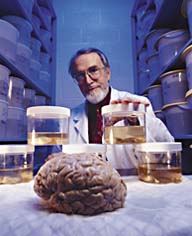April Fool’s Day by Bryce Courtenay is the well-known Australian author’s memoir of love for his son, Damon, a haemophiliac who was one of the first Australians to contract AIDS through blood transfusion. Damon died at the age of 24 in 1991 after a horrific struggle with an incompetent, largely uncaring and ignorant medical system, the blow of contracting AIDS further compounding the ravages of arthritis that usually cripples hemophiliacs in their teenage years.
Damon was becoming very, very sick with the many diseases that accompany the AIDS virus. His final two years of life should have taken a progressive, deteriorating course. Except there was one brief interlude when he actually began to get better.
One day, Damon visited his father, walking up the hill in record time. Damon, walking with a limp since the doctors had unwisely put a brace on his left leg many years earlier, his feet deformed from years of bleeding, was walking barefoot with comparative ease. His father noticed that his eyes were no longer dulled and had a clarity that he hadn’t seen for years. “I’m cured, Dad!” Damon said. He took a step backwards and raising his hands in the accepted Bruce Lee fighting stance, he chopped into the wooden panel of the front door. Then to my astonishment, he suddenly leapt up and kicked, driving the ball of his left foot into the same part of the door.”
His father writes. But I was suddenly aware that something else was about to occur that we couldn’t possibly understand. I had seen him do enough in these few minutes to put himself into hospital with a series of bleeds which, given his present physical condition, could quite easily set him back for months. And yet, he seemed unharmed. He hadn’t flinched as he’d slammed both the side of his hand and the ball of his foot into the door, nor had he as much as grunted when he jumped from the terrace wall.
Several months earlier, according to his girlfriend, Damon began getting higher and higher and not being able to sleep at night. Celeste thought it was the Ecstasy tablet that he tried a few times that pushed him into a higher state of consciousness, making him not feel pain. His newfound enthusiasm and pain-free body continued even after he stopped taking Ecstasy. The amazing thing was, he hadn’t had a bleed since he started taking Ecstasy, or at least Celeste believed that Ecstasy was the reason for the cessation of bleeding. The Ecstasy could have kick started the mania, but hypomania can also be one of the symptoms of the latter stages of AIDS .
Damon then went on to develop many of the symptoms that most of us reading this blog are familiar with: honorary memberships in secret societies, unusual dress code (Ray-Bans at night!), manic behavior that frightens the family to death.
The bleeds which had occurred during the five weeks since he’d become manic, were all relatively small ones and none of them had transpired from the deliberate and often severe knocks he’d taken. The mind is a truly strange mechanism but, since his childhood, we’d known that bleed followed bump just as surely as night followed day…..Just why and how his mania should prevent the more serious bleeding occurrences remains a huge and still unresolved puzzlement.
Damon’s experience rang a bell with me. I have long said in this blog that someone with a diagnosis of schizophrenia, or bipolar (the two are almost interchangeable) tend to be super healthy people. Dr. Abram Hoffer observed the same robust health in his schizophrenia patients. Of his patients´families he observed that close family members rarely got cancer, as if the condition of schizophrenia conferred a special evolutionary advantage on this group of people. I have also heard that when a person with schizophrenia develops another life threatening condition, such as cancer, the symptoms of schizophrenia go away. There must be researchers who are studying the health benefits conferred (resistance to pain, increased immunity) by mania and schizophrenia, but I am not aware of any. Instead, medical research begins with the premise that there is something wrong with the mind, not something right with it.
Damon subsequently got treated by psychiatry and put on Stelazine and Lithium, another addition to the horrendous cocktail of drugs he was on.
Stelazine, known in medical circles as a chemical straightjacket, when taken in combination with Lithium, is a real bitch; it flattened Damon out so completely that he seemed for a while to be a walking zombie. Damon crazy was difficult to handle and, while his cocked-up enthusiasm and desire to live sometimes took the most bizarre turns and his paranoia was extremely hard to cope with, he was still very much alive, an extreme form of the Damon we loved. Now he seemed dead.
Some months later, when he’d finally recovered from his manic condition, he would confide in Celeste that he missed the certainty, the sense of invincibility, of his own strength in mind and body that the mania had given him. As Damon grew increasingly frail and incapable in the final year of his life, he would sometimes say wistfully to Celeste, “It was so great, Babe! It was the first time in my life I felt completely whole! I was the might Damon. If only I could be well and have that same feeling again!”
Why isn´t medical research focusing on the immune protection of schizophrenia and bipolar? The mind´s sense of invincibility that Damon and others experience when psychotic, translates into ultra-normal good health. Based on my own observations of my son´s seeming imperviousness to the common cold and other aches and pains, I have always been suspicious when someone claims to have physical ailments co-existing with schizophrenia. ´Whatever they have that they think is schizophrenia, I conclude, has been misdiagnosed as schizophenia.
April Fool´s Day is a wonderful memoir that I urge you to read.


